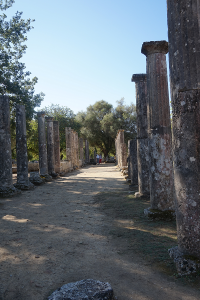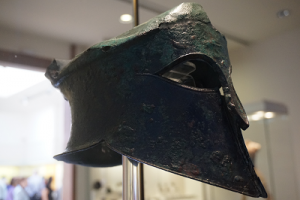Olympia

What a better way to understand not only the honored tradition of having present day Olympics, but to have a deeper understanding of where this all took place. The Olympics began in ancient Greece to see which city-state, and person the best was. Most of these sports applied to events needed during war since Greece wasn’t a whole country yet; they were still city-states.
When these events were held, there was only one winner that gained the honor of champion. They were crowned with a laurel of olive leaves, and the games were over. The winner may receive some free stuff after they got back home, and a statue of them, but nothing more. Those who didn’t win, got nothing. However, those who had decided to cheat in these important games ended up with something else. They were forever shamed as their names were carved into stone, along with their crime, and hometown, and family name.

Today, the timed tradition lives on with some modern modifications of course. Begin your trip to see the vastness of the ruins. At the site, there stands temples to different gods, even the temple to Zeus which became one of the seven wonders of the ancient world, the track and field where competitors would compete, statues that honored those who won, as well as those who tried to cheat. See the bath houses where they would rest between events, the gymnasium, and where they practiced other wresting events.
From all the ruins, head up toward the museum. This museum now houses the many precious artifacts that have been discovered from these ruins. Some of these artifacts include the Helmet of Miltiades, Disk of the Sun, many weapon offerings, and Nike of Paeonius. There are many more statues within these halls, even the statues that once adorned the outside of the temples are found inside.
Tickets for the museum and site is 9 Euro. Be sure to bring sunglasses, and to watch your tour guide; they move fast!